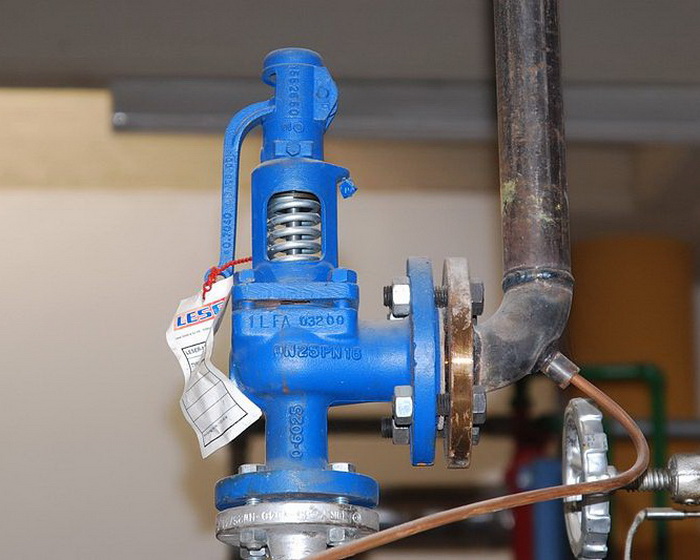Please do not block ads on our site. Clicks on ads help us exist, grow and become more useful for you!
Adjustment of the safety valve
Adjustment of the relief valve is carried out at the installation site after completion of installation and flushing of the system. To do this, set the adjustment pressure, check the opening start pressure, full opening pressure, and closing pressure of the relief valve.
The adjustment pressure of the relief valve should be set slightly higher than the maximum operating pressure of the system, which corresponds to the normal operating mode of the protected installation.
The full opening pressure of the relief valve should not exceed the maximum allowable pressure for the weakest element of the system.
The closing pressure of the relief valve should be higher than the minimum allowable pressure that corresponds to the normal operating mode.
Adjustment of the pressure in a spring-loaded relief valve is carried out by rotating the adjusting screw of the compression spring, which presses the disc against the seat, while adjustment of a lever-type relief valve is carried out by determining the required weight.
Pre-adjustment is not required for relief valves, the adjustment pressure of which is fixed by the manufacturer.
The relief valve is considered to be operational if it provides sealing of the closure, full opening and closing of the shutter, and the pressures, adjustments, start of opening, full opening, and closing pressures are within the permissible values indicated in the valve passport.
Example: Adjustment of the relief valve in a heating system of a 10-story building connected to an autonomous boiler house (or to a heat network using an independent scheme). At the installation site of the relief valve at the basement level, the pressure values will be as follows:
Minimum operating pressure is determined as the sum of the static pressure of the heating system, which is 10 floors at 3 meters = 30 m, plus the minimum excess pressure at the upper floor level - let's assume 5 meters, therefore Pmin = 30 + 5 = 35 m = 3.5 bar. The minimum operating pressure in the heating system is set during its filling with cold water. An increase in water temperature leads to an increase in pressure to the maximum working value. See more details in the principle of operation of the expansion tank.
Maximum operating pressure for the heating system is set when calculating a closed expansion tank. The smaller it is, the more necessary the volume of the expansion tank and the higher its cost. For our building, it would be rational to adopt a maximum working pressure of Pр=5.5 bar. The maximum working pressure in the closed circuit of the heating system is achieved at maximum coolant temperature, i.e., in the coldest days of the heating season.
Maximum allowable pressure for the heating system is determined by the strength limit of the weakest element of the circulation circuit, assuming that it is Pmax=8 bar.
For such a heating system, the relief valve must be adjusted to a pressure of Рн=6 bar, with the opening start pressure of approximately Рно=6.2 bar, full opening pressure of Рпо=6.8 bar, and closing pressure of Рз=4.8 bar.
question : comment : feedback
answer
416
 Catalog of
Catalog of safety valves
Valtec RUS
Watts
Afriso
Afriso
Afriso
ARI Armaturen
Flamco
Flamco
Swagelok
Officine Rigamonti
Duco
SYR
SYR
Pneumatex
Pneumatex
Pneumatex
TLV
TLV
Zetkama
Zetkama
Honeywell - Resideo
Honeywell - Resideo
LDM
LDM
Danfoss
Danfoss
Danfoss
IMI Hydronic
IMI Hydronic
IVR
Samson
Valtec RUS
Armak
Genebre








 Tutorial Herz
Tutorial Herz
